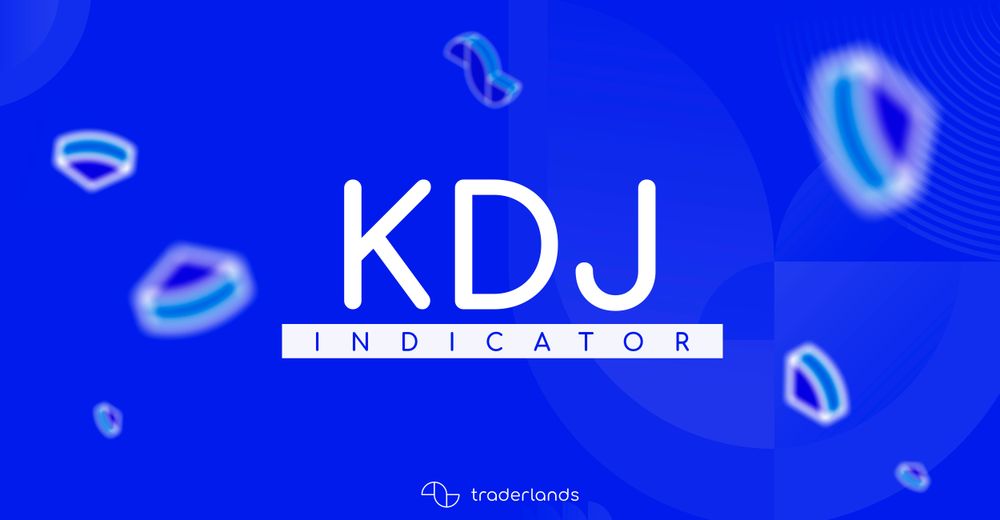What is KDJ and How to Use?
The KDJ indicator, also known as the Stochastic Oscillator, is a popular technical analysis tool used by traders to identify potential reversals and overbought/oversold conditions in financial markets.
It is based on the concept of momentum and is often used in conjunction with other indicators to make informed trading decisions. In this article, we will delve into the details of the KDJ indicator and its interpretation.
KDJ Indicator Overview:
The KDJ indicator consists of three components: %K, %D, and the J line. It is derived from the %K line of the traditional Stochastic Oscillator and offers additional insights by introducing the J line. Let's understand each component individually:
%K Line: The %K line represents the current market position relative to the recent trading range. It is calculated using the following formula:
%K = (Current Close - Lowest Low) / (Highest High - Lowest Low) * 100
The %K line fluctuates between 0 and 100, where values near 0 indicate that the closing price is close to the lowest low, and values near 100 indicate that the closing price is close to the highest high.
%D Line: The %D line is a moving average of the %K line and helps smooth out the fluctuations. It is commonly calculated using a three-period simple moving average (SMA) of the %K line. The %D line is often displayed as a dotted line alongside the %K line.
J Line: The J line is introduced to provide additional information about the divergence between the %K and %D lines. It is calculated as follows:
J = 3 * %K - 2 * %D
The J line oscillates between -100 and +100, where values above +100 indicate overbought conditions, and values below -100 indicate oversold conditions.
How to use the KDJ Indicator?
Traders use the KDJ indicator to identify potential buy and sell signals and to assess market conditions. Here are a few common interpretations:
Overbought and Oversold Conditions: When the %K line or the J line rises above the +80 level, it suggests that the market is overbought, indicating a potential downward price reversal. Conversely, when the %K line or the J line drops below the -20 level, it indicates oversold conditions and a potential upward price reversal.
Divergence: Traders also look for divergences between the price action and the KDJ indicator. For example, if the price is making higher highs while the %K line is making lower highs, it could signal a potential trend reversal.
Crossovers: Bullish or bearish crossovers between the %K and %D lines are considered as significant signals. A bullish crossover occurs when the %K line crosses above the %D line, suggesting a potential buying opportunity. Conversely, a bearish crossover occurs when the %K line crosses below the %D line, indicating a potential selling opportunity.
Other Indicators can be used with the KDJ
Different indicators also can be used to provide additional confirmations to your strategy based on the KDJ indicator:
Moving averages, MACD, MACD DEMA, and other indicators can be used to add trend confirmations to the conditions you create on the KDJ indicator.
Oscillators like RSI are used to measure the magnitude and speed of price movements. By using RSI in conjunction with the KDJ indicator, you can confirm overbought and oversold conditions.
Volume indicators can be used to measure the strength of movements in addition to the conditions you built on the KDJ indicator.
KDJ Indicator at Traderlands Strategy Creator Tool
You can start creating a strategy by selecting "KDJ K Value" and “KDJ J Value” from the list. An example strategy is shown in the image below. You can use the KDJ indicator to create a strategy after doing your own research.
Enter Algorithm Rules You Can Add To Strategy Creator For Long / Spot Strategy
Exit Algorithm Rules You Can Add To Strategy Creator For Long / Spot Strategy
Sample Trade Settings
Backtest Results With 10X Leverage for this strategy setup for 6 Months on BTCUSDT
WARNING: The entry and exit strategies in the images are prepared ONLY for educational purposes to explain how indicators work. It does not guarantee any profit.
When creating an algorithmic trading strategy, a rule set is usually created by using more than one indicator.
Conclusion
The KDJ indicator is a valuable tool for traders to gauge market conditions and identify potential reversals. However, like any technical analysis tool, it should be used in conjunction with other indicators and analysis techniques for comprehensive decision-making. By understanding the components and interpreting the signals generated by the KDJ indicator, traders can enhance their trading strategies and make more informed trading decisions.
TradingView: https://www.tradingview.com/v/h51ZIRlX/





